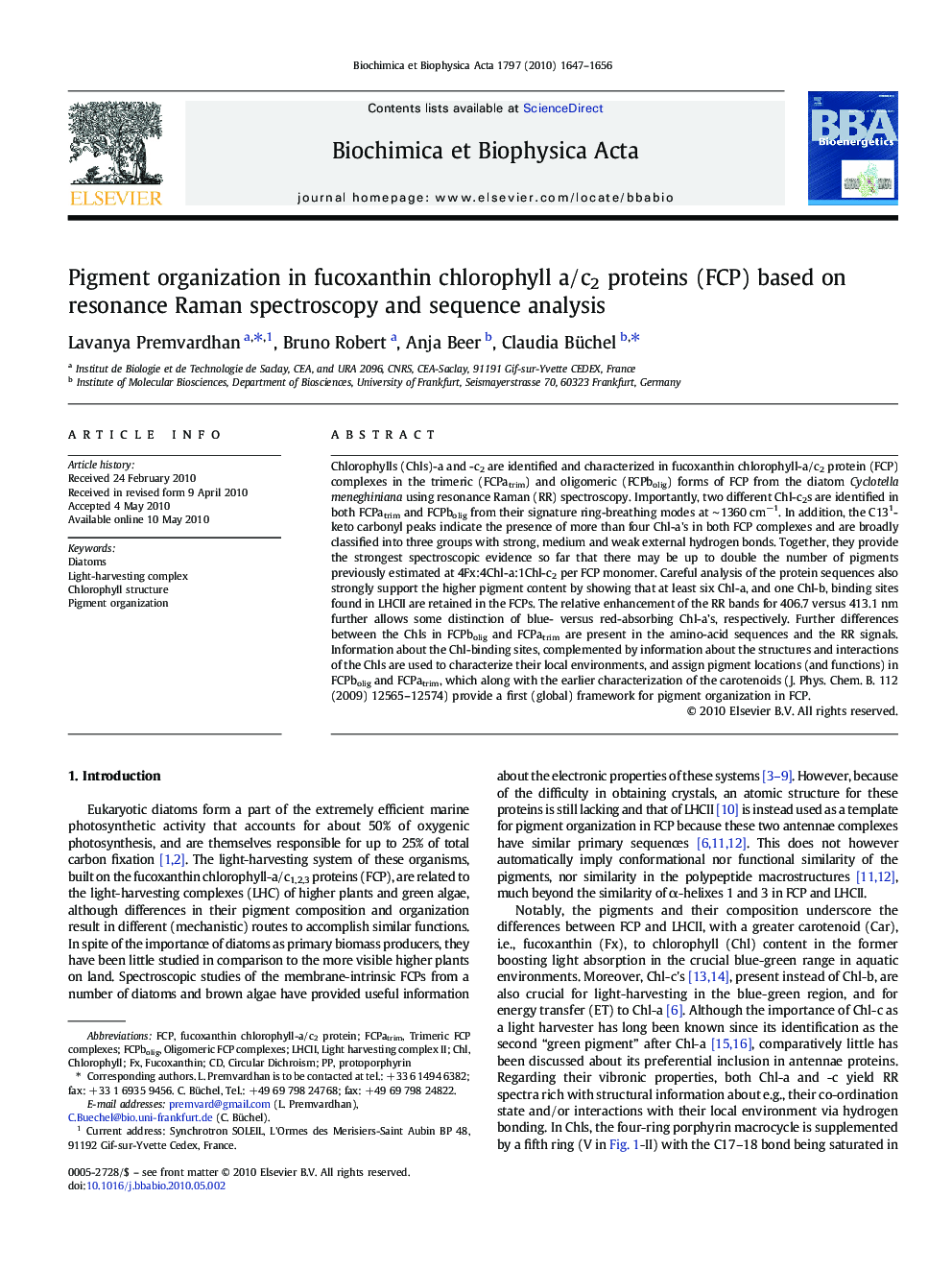| Article ID | Journal | Published Year | Pages | File Type |
|---|---|---|---|---|
| 1942778 | Biochimica et Biophysica Acta (BBA) - Bioenergetics | 2010 | 10 Pages |
Chlorophylls (Chls)-a and -c2 are identified and characterized in fucoxanthin chlorophyll-a/c2 protein (FCP) complexes in the trimeric (FCPatrim) and oligomeric (FCPbolig) forms of FCP from the diatom Cyclotella meneghiniana using resonance Raman (RR) spectroscopy. Importantly, two different Chl-c2s are identified in both FCPatrim and FCPbolig from their signature ring-breathing modes at ∼ 1360 cm−1. In addition, the C131-keto carbonyl peaks indicate the presence of more than four Chl-a's in both FCP complexes and are broadly classified into three groups with strong, medium and weak external hydrogen bonds. Together, they provide the strongest spectroscopic evidence so far that there may be up to double the number of pigments previously estimated at 4Fx:4Chl-a:1Chl-c2 per FCP monomer. Careful analysis of the protein sequences also strongly support the higher pigment content by showing that at least six Chl-a, and one Chl-b, binding sites found in LHCII are retained in the FCPs. The relative enhancement of the RR bands for 406.7 versus 413.1 nm further allows some distinction of blue- versus red-absorbing Chl-a’s, respectively. Further differences between the Chls in FCPbolig and FCPatrim are present in the amino-acid sequences and the RR signals. Information about the Chl-binding sites, complemented by information about the structures and interactions of the Chls are used to characterize their local environments, and assign pigment locations (and functions) in FCPbolig and FCPatrim, which along with the earlier characterization of the carotenoids (J. Phys. Chem. B. 112 (2009) 12565–12574) provide a first (global) framework for pigment organization in FCP.
